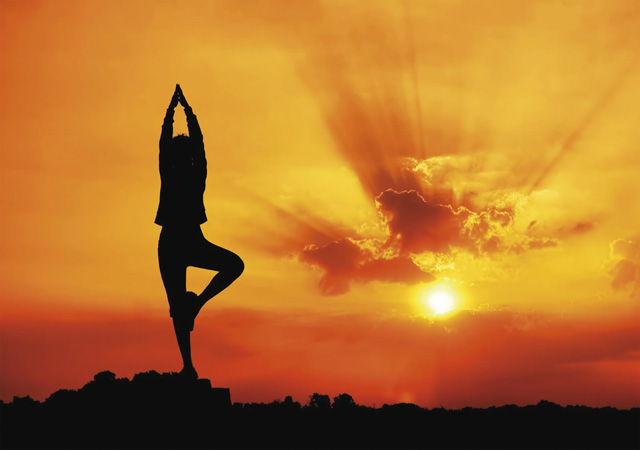The Journey to The World of Yoga
The Message of Yoga for Humankind
Human being always fell in love with knowledge of Reality. He wanted to know the vastness around him containing all unimaginable designs. Life’s mystery always made him sit in deep thinking. In India, philosophical thought known as Darsana represents the inner vision towards life that the ancient seers had got through intent contemplation on Reality. This quest for an ultimate reality has led the human being to philosophies and sciences. Philosophy and science are not opposite in any way. Theory of science is philosophy and experimental part of philosophy is science.
Human life should not be seen in fragments as is done in science for dissection. It is a whole and Yoga is the method to integrate all the dimensions of life to experience the higher consciousness hidden within.
Both the goal and the methods of reaching the state of highest Consciousness called God-Consciousness are called Yoga, such as Karma-Yoga, Bhakti-Yoga, Râja-Yoga, and Jnâna-Yoga. But the ultimate goal of all these is same; the supreme consciousness.
All these types of yoga after all aim at the absolute happiness of human being.
The Yoga practice of present age is more reduced to achievements of this life such as physical fitness, mental peace, and personality development and of course money making profession. But, sage Patanjali, the sage who systematized the Yoga tradition of this land, keeps a very high goal in front of us. It is realization through Samadhi.
- Yoga of sage Patanjali observes that the state of highest Consciousness is achieved through the inner vision called ‘realizing the matter and consciousness in their true nature’.
- This vision is obtained from intense absorption in one self, called Samadhi.
- But, a wavering and distracted mind cannot experience this state of absorption.
- Therefore, the mind should be understood and pacified by sublimating its operations.
- Since all humans do not possess the ability to pacify mind naturally, the intense practice of components of Yoga is recommended.
- In order to experience the state of Samadhi, one should teach mind the state
of one-pointedness (dharana) and meditation (dhyana) honestly for long
time. - A weak body cannot allow one to sit in meditation for long time, so regular
practice of physical exercise (Asana) and regulating breathing (Pranayama)
are recommended.
In this manner, all these components of Yoga help an aspirant of Yoga in
reaching the final goal and get rid of the influence of matter called Prakriti.
Thus it is clear that the Vedic and Patanjali Yoga aim at a high goal of life as Realization or remaining in the true nature of self as Consciousness. Asana and other physical exercises along with breathing regulations help us ward off the obstacles in this spiritual path. If we understand this relative importance of various components of Yoga we do not get easily misled by false claims of sudden realization in one day etc.
Yoga is a life-long discipline followed in every moment of our life. The results are great, from physical and mental to intellectual and spiritual.
About the Author:
Prof. Madhusudan Penna (Advisor- ARCIS)
Prof. Madhusudan Penna is a doyen of Yoga Philosophy in the contemporary world.
Being a profound scholar of Sanskrit, he has a deep penetration into the ancient Indian scriptures. He also cultivates the knowledge of Vedanta and has established himself as an erudite scholar in the same discipline.
With his all-comprehensive vision, he expounds the holistic view of Indian Philosophy in the light of scriptural wisdom. He is, at present, the Professor and Dean of the Faculty of Indian Philosophy and Culture at Kavikulaguru Kalidas Sanskrit University, Ramtek.



